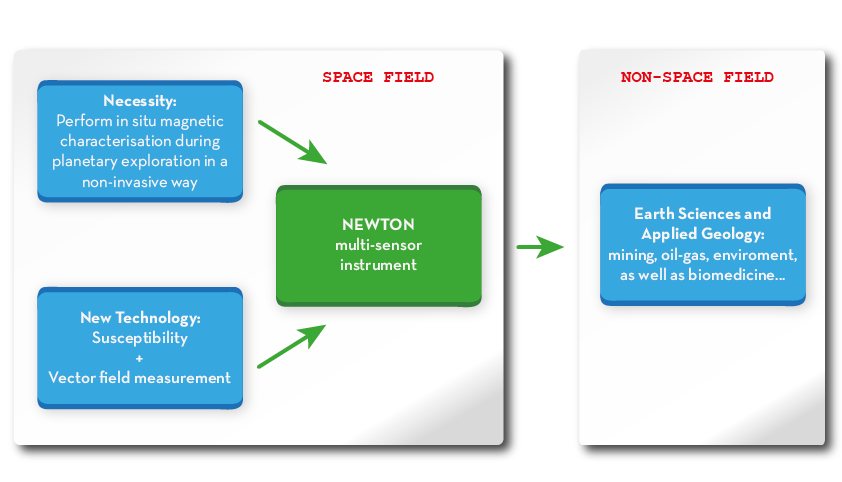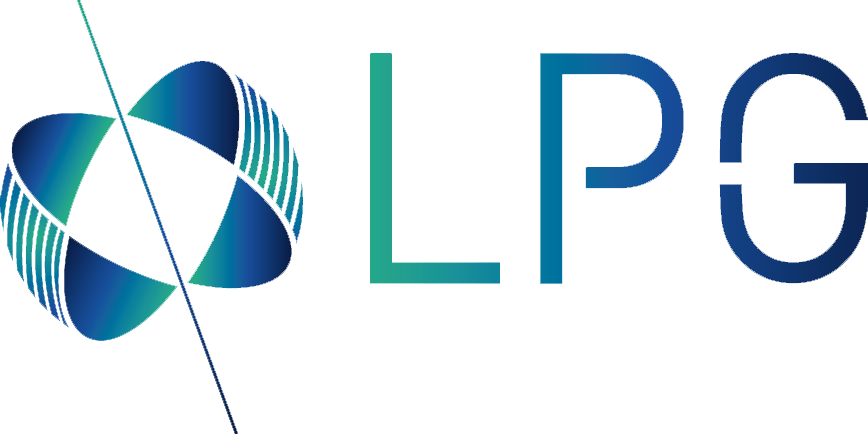General info
The NEWTON project is designed for the development of a scientific magnetic instrument for use in space, science and planetary exploration and with good prospects for commercial spin-off in the oil and gas sector, in the construction one and in the area of biomedicine. The goal, achievement of such a development and the scientific outcome, is the common denominator of the consortium which is a cooperation of engineering and scientific groups with a significant contribution of Small and Medium Enterprises, who can benefit from this opportunity to establish themselves either as precocious providers of the innovative technologies or pioneers in the introduction of novel and advanced methodologies in their procedures.
The project goes beyond the state-of- the-art technology by introducing magnetic susceptometry as a complement to existing compact vector magnetometers for planetary exploration already developed and tested by members of the consortium. With this, NEWTON provides a first opportunity to perform high resolution and complete non-invasive in-situ magnetic characterization of planetary surfaces and subsurfaces. The NEWTON instrument will deliver unique information on the magnetic structure stored during the formation of the measured rocks and thus, information on the primigenial global magnetising field. Moreover, NEWTON measurements will give information related to the past geological history of the planets as well as tectonically-induced changes in their orientation and thus on the planet history.
Why Susceptibility in space?
Apart from the Earth, the Moon, Mars, Ganymede and possibly Mercury have an intrinsic magnetic field. On the Moon and Mars, this magnetic field is purely the remanent signature of a past global magnetic field whose characteristics remain partly inaccessible. This is because the satellite measurements do not allow an unambiguous determination of the magnetization. To fully characterize these magnetic bodies and sources, planetary prospections on ground with rovers equipped with compact and light multi-sensor instruments are necessary. These can obtain detailed information on the magnetic signatures and rock susceptibilities prior to a more expensive and complicated sample-return mission.
The combination of magnetic and susceptibility measurements can be used to investigate the disputed origin of Martian moons Phobos and Deimos: whether they were captured asteroids, remnants from Mars formation, impact ejecta from the planet reaccreted in its orbit or a combination of all. Data from OMEGA Spectrometer on board Mars Express suggests that Phobos has a primitive chondrite-like composition. Even though all data seem to point to an in-situ formation for Phobos, it is not clear if it could be a captured achondrite-like meteor representing crustal fragments of Mars or another body including a previous remnant magnetisation. Landed instruments which combine vector magnetometers and susceptometers can shed new light on key questions like the intense magnetic anomalies of Mars or the origin of comets.
The members of NEWTON consortium have extensive experience and devoted considerable efforts to understand the benefit that in-situ magnetic measurements would have in the planetary science and exploration. Part of the consortium is also involved in Exomars’18 mission with an instrument (vector magnetometer and gradiometer) to measure the environmental magnetic field. By adding susceptometric analysis to existing instruments, NEWTON can provide new insights and understanding of space and can open a breach for a cost-effective investigation of magnetic prospections on planets, their moons and small bodies.
Why NEWTON technology on Earth?
The impact of NEWTON goes beyond our understanding of space. The novel instrument design introduced with NEWTON provides ample opportunities for spin-in/spin-out effects between space and non-space technology fields, where the outcoming instruments would represent a real advantage over existing products. For instance in prospections on Earth this technology can open a new era of magnetic characterization involving numerous sectors as geological and geophysical exploration, raw material, e.g. oil and gas, ore deposite research, as well as mining industries. High resolution mapping of distinct magnetic properties might provide a characterization of most distinct natural rocks and their complex three-dimensional geological structure as well as a localization of not exposed artificial artefacts, like older building walls, voids, waste, bombs or other older human deposits.

The Concept
NEWTON pursues the design, development and validation of a novel and advanced instrument to perform in-situ measurements of the complex susceptibility (real and imaginary parts), as well as magnetic field vector measurements. NEWTON represents a new concept of a portable magnetic instrument, which widens the performance and complements the existing instrumentation for magnetic prospections with new capabilities so far restricted to laboratory analysis. The proposed development is groundbreaking because it will permit for the first time the measurements of parameters of main importance in planetary magnetism with implications to the geological history of the planets. The implementation introduces new concepts totally immune to radiation in the designs, which can open new horizons in power systems of space missions, as well as challenging systems of frequency managing which have direct application in a number of other kind of payloads.
With the aim of maximizing the impact of novel NEWTON technology, different prototypes will be developed. Two prototypes will be develop for planetary application, while a slightly (reduced) adapted version will be developed in order to demonstrate the spin-off of the technology between space and non-space fields. This will allow the consortium to simultaneously investigate:
- Ground breaking potential for the measurements of parameters of main importance in planetary magnetism with implications to the geological history of the planets by introducing susceptometer technology and new technologies that are immune to radiation in the designs and
- Integrate and explore synergies to industrial spin-off.




